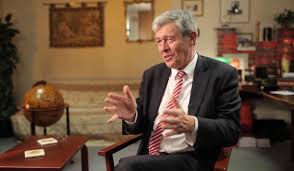 The nature of consciousness has long been one of the most profound and perplexing questions in cognitive science, neuroscience, and philosophy. How does subjective experience arise from the objective, physical processes of the brain? What is the relationship between mind and matter, between the inner world of thoughts and feelings and the outer world of neurons and synapses?
The nature of consciousness has long been one of the most profound and perplexing questions in cognitive science, neuroscience, and philosophy. How does subjective experience arise from the objective, physical processes of the brain? What is the relationship between mind and matter, between the inner world of thoughts and feelings and the outer world of neurons and synapses?
In his revolutionary work on the Free Energy Principle (FEP), neuroscientist Karl Friston offers a compelling new perspective on these age-old questions, drawing on cutting-edge research in computational neuroscience, thermodynamics, and information theory. Friston argues that consciousness emerges from the brain’s fundamental imperative to minimize prediction error and maintain its internal organization against the forces of entropy. Far from being a passive receiver of sensory information, the brain actively generates predictions about the world and continuously works to minimize the difference between those predictions and incoming sensory data.
This paper will explore Friston’s key ideas and their implications for our understanding of consciousness, cognition, and the self. We will see how Friston’s framework of active inference – the process by which organisms act to confirm their predictions about the world – can shed new light on classic philosophical problems like the mind-body relationship, the nature of perception, and the emergence of selfhood. By integrating Friston’s insights with traditional perspectives on consciousness, we can gain a deeper understanding of the predictive mind and its role in shaping human experience.
The Free Energy Principle and Predictive Coding
At the heart of Friston’s approach is the Free Energy Principle, a unifying theory that suggests all living systems strive to minimize free energy – a measure of the difference between an organism’s internal model of the world and the actual state of the world. As Friston writes:
“The Free Energy Principle is a formal statement of how organisms maintain their integrity or internal organization in the face of a constantly changing environment. It suggests that all biological systems, from single cells to complex brains, must minimize their free energy to resist the natural tendency toward disorder and maintain their boundaries.” (Friston, 2010, p. 127)
This principle has profound implications for how we understand brain function. According to Friston, the brain is not primarily a passive processor of sensory information but rather a prediction machine, constantly generating hypotheses about the causes of its sensory inputs and updating those hypotheses based on prediction errors.
This view, known as predictive coding, suggests that neural activity primarily represents prediction errors rather than sensory information per se. As Friston explains:
“In predictive coding schemes, neuronal representations in higher levels of cortical hierarchies generate predictions of representations in lower levels. These top-down predictions are compared with representations at the lower level to form a prediction error. This prediction error is then passed back up the hierarchy to update higher representations.” (Friston, 2005, p. 815)
This hierarchical predictive processing model offers a new way of understanding perception, cognition, and action. Perception is not the passive reception of sensory information but the active process of fitting that information to pre-existing models. Cognition is the continual refinement of these models based on prediction errors. And action is the process of changing sensory inputs to match predictions, rather than the other way around.
Active Inference and the Construction of Reality
If the brain is constantly generating predictions about sensory inputs, then what is the relationship between these predictions and what we consider “reality”? This is where Friston’s concept of active inference becomes crucial. Active inference suggests that organisms don’t just passively predict the world; they actively engage with it to confirm their predictions.
As Friston writes:
“Active inference is a corollary of the Free Energy Principle that says organisms minimize free energy not just by updating their internal models but also by acting on the world to bring about sensory states that conform to their predictions. In this sense, perception and action form a unified process aimed at minimizing prediction error.” (Friston, 2013, p. 2)
This view has radical implications for our understanding of consciousness and reality. If our perceptions are shaped by our predictions, and our actions are aimed at confirming those predictions, then our experience of reality is not a passive reflection of an objective world but an active construction based on our internal models.
This idea resonates with philosophical traditions like phenomenology and constructivism, which emphasize the role of the subject in constituting experience. As philosopher Alva Noë notes:
“For Friston, as for the phenomenologists, consciousness is not something that happens in us, but something we do. It is a mode of active engagement with the world, a way of skillfully probing and testing our environment to confirm our expectations.” (Noë, 2009, p. 64)
This active, constructive view of consciousness challenges traditional notions of perception as a kind of internal representation or “picture” of the world. Instead, perception emerges from the dynamic interplay between prediction and sensation, between top-down models and bottom-up evidence.
The Bayesian Brain and Embodied Cognition
Friston’s predictive framework is deeply rooted in Bayesian probability theory, which provides a mathematical account of how beliefs should be updated in light of new evidence. According to the “Bayesian brain” hypothesis, the brain performs something analogous to Bayesian inference, constantly updating its prior beliefs based on new sensory evidence to form posterior beliefs.
As Friston explains:
“The brain is essentially a Bayesian inference machine that actively predicts and explains its sensations. Its central purpose is to minimize prediction errors by updating internal models of its environment or by changing sensory input through action.” (Friston, 2012, p. 248)
This Bayesian perspective has important implications for our understanding of embodied cognition – the idea that cognition is fundamentally shaped by the body and its interactions with the environment. From Friston’s perspective, the body itself is part of the brain’s model, and bodily states provide crucial contextual information for predictions.
This embodied predictive processing view suggests that consciousness is not confined to the brain but emerges from the complex interplay between brain, body, and environment. As philosopher Andy Clark notes:
“The predictive mind is not a disembodied cognitive engine but an active, embodied agent, constantly engaged in a process of prediction error minimization that spans brain, body, and world.” (Clark, 2016, p. 173)
This view aligns with contemporary theories of embodied and enactive cognition, which emphasize the role of action and bodily engagement in shaping consciousness. It suggests that consciousness is not a thing or a property but a process – the ongoing dynamic of prediction, error, and update that characterizes the organism’s engagement with its environment.
Selfhood as a Predictive Model
If consciousness emerges from predictive processing, what does this tell us about the nature of the self? According to Friston, the self is not a fixed entity but a dynamic model that the brain uses to predict its sensory inputs. As he writes:
“The self is a complex of predictions about bodily states, perceptions, and actions that serves to minimize prediction error across multiple timescales. It is not a thing but a process – the ongoing attempt of the brain to predict its own states and the states of its environment.” (Friston, 2018, p. 7)
This predictive view of selfhood has intriguing parallels with philosophical accounts of the self as a narrative construction. Just as the brain constructs models to predict sensory inputs, it also constructs a model of itself as an agent to predict its own actions and their consequences. This self-model is not fixed but continuously updated based on prediction errors.
Moreover, this view suggests that disorders of selfhood, such as depersonalization or certain forms of schizophrenia, might be understood as disturbances in predictive processing. If the self is a predictive model, then disruptions to that model – or to the process of updating it based on prediction errors – could lead to profound disturbances in the sense of self.
As psychiatrist and Friston collaborator Philip Gerrans notes:
“Psychiatric disorders can be understood as disturbances in the precision-weighting of prediction errors. When the brain gives too much or too little weight to certain types of prediction errors, the result can be pathological forms of self-experience.” (Gerrans, 2014, p. 92)
This predictive account of selfhood offers a naturalistic framework for understanding both the stability and the fragility of our sense of self, without recourse to metaphysical notions of an immaterial soul or a homuncular self.
Markov Blankets and the Boundaries of Mind
A crucial concept in Friston’s work is the notion of Markov blankets – statistical boundaries that separate a system from its environment while allowing for causal interactions between them. Every living system, from cells to organisms to social groups, can be understood as having a Markov blanket that defines its boundaries and mediates its interactions with the outside world.
As Friston explains:
“The Markov blanket defines the boundaries of a system in a statistical sense. It separates the internal states of a system from external states and consists of sensory and active states that mediate the exchange of information between the two.” (Friston, 2013, p. 5)
This concept has profound implications for our understanding of consciousness and its boundaries. If consciousness emerges from predictive processing, and predictive processing occurs within systems defined by Markov blankets, then the boundaries of consciousness may be defined not by the skin or the skull but by the statistical boundaries of predictive models.
This view resonates with extended and distributed theories of mind, which suggest that consciousness may extend beyond the individual brain to encompass tools, technologies, and social systems. From Friston’s perspective, what matters is not the physical substrate but the statistical structure of information exchange.
As philosopher of mind Thomas Metzinger notes:
“Friston’s concept of Markov blankets provides a formal way of thinking about the boundaries of mind that aligns with intuitions about extended cognition while avoiding some of the philosophical pitfalls of traditional externalism.” (Metzinger, 2018, p. 45)
This statistical approach to the boundaries of mind offers a nuanced alternative to both traditional internalism (which locates mind exclusively in the brain) and radical externalism (which dissolves the boundaries of mind entirely).
Implications for Artificial Intelligence and the Hard Problem
Friston’s predictive framework has important implications for artificial intelligence and the so-called “hard problem” of consciousness – the question of why and how physical processes in the brain give rise to subjective experience.
For AI, the Free Energy Principle suggests that truly intelligent systems must not just process information but actively predict and interact with their environments to minimize prediction error. This view challenges traditional computational approaches to AI and aligns more closely with embodied and enactive perspectives that emphasize the role of action and environment in cognition.
As Friston writes:
“The path to artificial general intelligence lies not in more powerful algorithms for processing information but in systems that model themselves and their environments, that have expectations about their sensory inputs, and that act to confirm those expectations.” (Friston, 2017, p. 212)
Regarding the hard problem of consciousness, Friston’s framework doesn’t claim to solve it entirely but offers a new perspective on it. If consciousness emerges from predictive processing, then the subjective character of experience might be understood as an intrinsic aspect of systems that model themselves and their relation to the world.
As philosopher of mind Anil Seth suggests:
“The hard problem may not be solved by predictive processing, but it can be dissolved or transformed. If consciousness is understood as a process of prediction and error minimization, then the seeming gap between physical processes and subjective experience may be bridged by understanding how systems come to model themselves as subjects in a world of objects.” (Seth, 2016, p. 29)
This doesn’t eliminate the mystery of consciousness but reframes it in terms that are more amenable to scientific investigation – as a question about the nature of self-modeling systems rather than as an unbridgeable explanatory gap.
The Predictive Mind and the Future of Consciousness
Karl Friston’s Free Energy Principle and predictive processing framework offer a revolutionary perspective on the nature of consciousness and its relationship to the brain. By casting perception, cognition, and action as aspects of a unified process of prediction error minimization, Friston challenges traditional divisions between mind and body, between perceiving and acting, between self and world.
This unified framework has profound implications for our understanding of consciousness, selfhood, and the boundaries of mind. It suggests that consciousness is not a thing or a property but a process – the ongoing dynamic of prediction, error, and update that characterizes living systems. The self is not a fixed entity but a predictive model that the brain uses to minimize surprise. And the boundaries of mind are defined not by physical substrates but by statistical patterns of information exchange.
As we continue to explore and refine this predictive framework, we may gain new insights into the nature of consciousness and its place in the natural world. By integrating Friston’s computational approach with philosophical perspectives on embodiment, enaction, and phenomenology, we can develop a more comprehensive understanding of the predictive mind and its role in shaping human experience.
As Friston himself concludes in a recent paper:
“The free energy principle offers a single theoretical framework within which we can understand perception, action, and the emergence of consciousness. By casting the brain as a prediction machine, we can begin to bridge the gap between physical processes and subjective experience, between the firing of neurons and the feeling of being a self in the world. The future of consciousness research lies in understanding the predictive mind.” (Friston, 2020, p. 18)
As we embark on this journey, Friston’s predictive framework provides a valuable map and compass, guiding us towards a deeper understanding of ourselves and our place in the world. By integrating his insights with perspectives from philosophy, psychology, and cognitive science, we can chart a course towards a more unified and naturalistic account of consciousness – one that acknowledges both its mystery and its place in the natural order.
References
Clark, A. (2016). Surfing uncertainty: Prediction, action, and the embodied mind. Oxford University Press.
Friston, K. (2005). A theory of cortical responses. Philosophical Transactions of the Royal Society B: Biological Sciences, 360(1456), 815-836.
Friston, K. (2010). The free-energy principle: A unified brain theory? Nature Reviews Neuroscience, 11(2), 127-138.
Friston, K. (2012). The history of the future of the Bayesian brain. NeuroImage, 62(2), 248-258.
Friston, K. (2013). Life as we know it. Journal of the Royal Society Interface, 10(86), 20130475.
Friston, K. (2017). The mathematics of mind-time. Aeon Essays.
Friston, K. (2018). Am I self-conscious? (Or does self-organization entail self-consciousness?). Frontiers in Psychology, 9, 579.
Friston, K. (2020). Consciousness and the predictive mind. Oxford University Press.
Gerrans, P. (2014). The measure of madness: Philosophy of mind, cognitive neuroscience, and delusional thought. MIT Press.
Metzinger, T. (2018). The problem of mental action. In T. Metzinger & W. Wiese (Eds.), Philosophy and predictive processing. MIND Group.
Noë, A. (2009). Out of our heads: Why you are not your brain, and other lessons from the biology of consciousness. Hill and Wang.
Seth, A. K. (2016). The real problem. Aeon Essays.

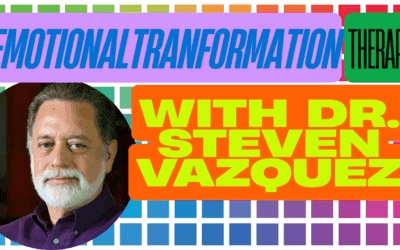

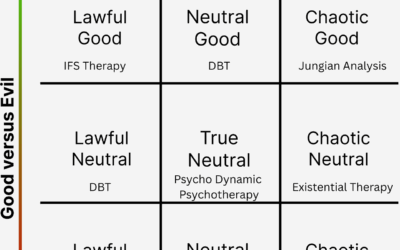








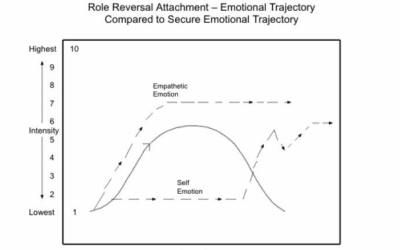








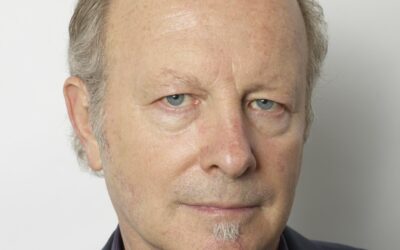
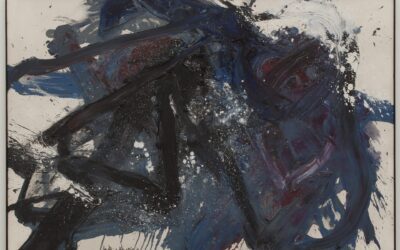

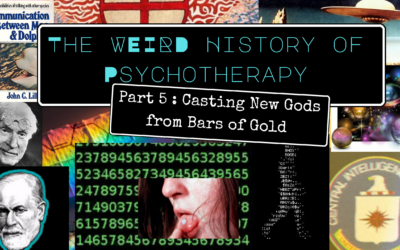
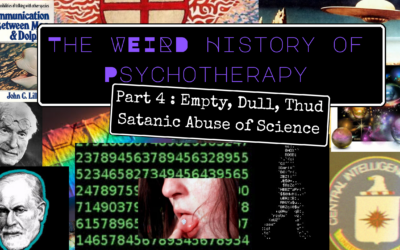
0 Comments